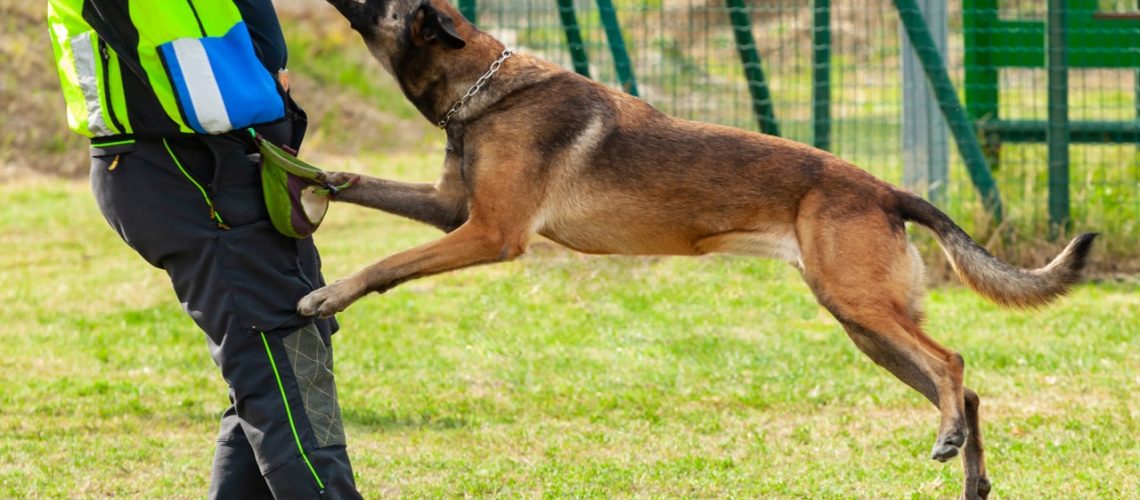Dog bite injuries significantly impact individuals and communities, often leading to physical, emotional, and financial challenges. In Phoenix, Arizona, like many other places, dog bite incidents occur more frequently than we might realize. Understanding the causes and prevention strategies for dog bites is crucial for ensuring public safety and providing legal assistance to those affected.
According to the research brief on dog bites by the Arizona Department of Health Services, between 2008 and 2012, there were 34,151 reported cases of dog bites in Arizona alone. These statistics highlight the magnitude of the problem and the need for effective preventive measures.
By understanding the common causes of dog bite injuries and identifying the risk factors involved, we can take proactive measures to prevent these incidents from occurring in the first place. Our comprehensive guide will delve into the causes of dog bite injuries, explore the factors that increase the likelihood of dog bites, and provide practical strategies for preventing such incidents. Whether you seek legal assistance for a dog bite injury case or want to protect yourself and your loved ones, this article will equip you with valuable insights and actionable tips.
Remember, dog bite prevention is about protecting ourselves and creating a safer environment for everyone in our community. Together, we can promote responsible dog ownership, ensure public safety, and provide legal assistance for those affected by dog bite injuries.
Common Causes of Dog Bite Injuries:
Dog bites can occur for various reasons, and understanding the common causes is essential in addressing and preventing such incidents. Typical behavioral issues in dogs include humping, excessive protectiveness, leash pulling, disobedience, chewing, digging, food begging, and aggressive behavior.
It’s worth noting that some of these problems may be attributed to underlying factors such as diseases, hormonal imbalances, or physical abnormalities. Separation anxiety is a prevalent behavioral problem in dogs, characterized by vocalization, destructive behavior, inappropriate elimination, and escape attempts when the dog is separated from their owner.
Aggression is also a commonly observed issue, often stemming from a dog’s desire to create distance from a particular situation. In this section, we will explore the primary factors that contribute to dog bite injuries.

Fear aggression:
Fear aggression is one of the key reasons for dogs biting. When dogs feel threatened or fearful, they may exhibit aggressive behavior as a defense mechanism. It happens when dogs encounter unfamiliar situations, loud noises, or individuals they perceive as threatening. Understanding fear aggression can help individuals recognize the signs and take appropriate precautions to avoid triggering a dog’s aggressive response.
Protective Instincts:
Protective instincts also play a significant role in dog bite incidents. Dogs are naturally protective of their territory, family, and resources. If they perceive a potential threat to themselves or their possessions, they may resort to aggressive behavior, including biting, as a defense. Recognizing and respecting a dog’s protective instincts is crucial in minimizing the risk of bites.
Territorial Behavior:
Territorial behavior is another common cause of dog bites. Dogs may become possessive of their living space, such as their yard or home, and perceive intruders as threatening. When individuals unknowingly invade a dog’s territory, they may provoke an aggressive response, leading to a bite. Understanding and respecting a dog’s territorial boundaries can help prevent such incidents.
Lack of Socialization:
Lack of socialization is a significant factor that contributes to dog bite incidents. During their critical socialization period, dogs not adequately exposed to various people, animals, and environments may exhibit fear or aggression towards unfamiliar stimuli. Proper socialization from an early age can help dogs develop positive associations and reduce the likelihood of aggressive behavior toward unfamiliar individuals.
By understanding these common causes of dog bite injuries, individuals can better recognize the warning signs to prevent such incidents.
Risk Factors for Dog Bite Injuries
Dog bites can occur due to various factors, including breed characteristics, dog ownership factors, and human behavior. Understanding these factors is essential in identifying potential risks and taking preventive measures to reduce dog bite incidents.
Breed Predispositions:
Breed plays a role in the likelihood of dog bites. According to a study conducted by the American Veterinary Medical Association (AVMA), certain breeds, such as terrier, working, herding, and nonsporting breeds, are associated with a higher risk of biting incidents. While it’s important to note that breed alone is not a reliable predictor, understanding breed tendencies can help individuals make informed decisions when interacting with dogs.
Irresponsible Ownership Practices:
The Impact of Neglectful Behaviors Irresponsible ownership practices contribute significantly to dog bite incidents. Responsible pet owners understand the importance of providing their dogs with proper care, attention, and training. Regular veterinary care, appropriate exercise, mental stimulation, and socialization are vital to a dog’s well-being and can help prevent aggressive behavior.
Human Provocation:
Understanding the Role of Human Behavior Human actions and behaviors can provoke dogs and increase the likelihood of bites. Engaging in teasing, rough handling, or invading a dog’s personal space can trigger defensive responses.
Children are particularly vulnerable to dog bites, as they may not understand appropriate boundaries or recognize warning signs of aggression. According to the American Veterinary Medical Association study, male children aged 5 to 9 years had the highest injury rate from dog bites.
Education is crucial in preventing dog bites, as individuals must understand appropriate interactions. Teaching children and adults alike to approach dogs calmly, ask for permission from the owner, and respect a dog’s boundaries can significantly reduce the risk of dog bites.
Environmental Factors:
The Influence of Surrounding Circumstances Environmental factors can contribute to dog bite incidents. Overcrowding, poor living conditions, and lack of supervision can create stress and anxiety in dogs, increasing the likelihood of aggressive behavior.
Creating safe and secure environments for dogs, providing adequate living space, and ensuring proper supervision can help minimize potential triggers and prevent dog bites.
Understanding Dog Bite Prevention
Responsible dog ownership, awareness campaigns, and access to legal assistance create a comprehensive approach to dog bite prevention. Implementing the right strategies and measures can significantly contribute to preventing dog bite incidents and promoting safer interactions with dogs. Here are the key points highlighting the importance of dog bite prevention for public safety and well-being.
Leash Laws and Responsible Pet Ownership:
Ensuring Control and Safety Adhering to leash laws and practicing responsible pet ownership are vital steps in preventing dog bite incidents, particularly in public spaces.
The leash law legislation is in the Arizona Revised Statute 11-1012. Following Arizona law, it is required to keep dogs on a leash that does not exceed six feet long when in public parks or public school properties.
Alternatively, dogs can be securely enclosed within a car, cage, or other safe enclosure. Implementing this universal leash law aims to enhance the sense of safety among citizens while walking in public areas like parks and fields. It is generally prohibited for female dogs in heat or vicious dogs to be allowed to roam freely.
These measures ensure the safety and well-being of people and dogs in public spaces. Responsible pet ownership extends beyond leashing; it includes providing proper care, regular veterinary check-ups, and ensuring dogs are up-to-date on vaccinations. By following these practices, owners can minimize the risk of their dogs behaving aggressively or causing harm to others.
Public Awareness and Education:
Promoting a Culture of Safety Raising public awareness about dog bite prevention is essential to create a safer environment for everyone. Develop educational campaigns and distribute informative materials highlighting responsible dog ownership, canine behavior, and how to prevent dog bites. Collaborate with local community organizations, schools, and veterinary clinics to reach a broader audience. Emphasize the importance of reporting aggressive dogs or concerning behavior to the appropriate authorities to prevent future incidents.
Responsible Dog Bite Reporting and Legal Assistance in Arizona
In Arizona, dog owners, victims, and witnesses must adhere to the legal requirement of reporting a dog bite incident immediately following an attack. Prompt reporting ensures that necessary actions can be taken to address the situation and prevent future incidents.
To report a dog bite in Arizona, individuals can contact Animal Care and Control at (602) 506-PETS (7387) or complete an online report. The online reporting forms include specific categories such as “bite or attack on a person” or “attack on an animal.” Alternatively, individuals can also initiate a report by calling 602-506-7387.
When facing legal matters related to dog bites in Arizona, seeking professional legal assistance is crucial. The Sorenson Law Firm handles dog bite cases and provides expert guidance and representation. Their extensive experience in this area of law supports victims in pursuing the compensation they need to deal with the damages caused by dog bite incidents.
By promptly reporting dog bites and seeking legal assistance when necessary, individuals can ensure that their rights are protected and that appropriate actions are taken to address the consequences of dog bite incidents in Arizona.
Dog Bite Prevention Tips
Educating the Next Generation Children are at higher risk of dog bites due to their limited understanding of canine behavior and body language.
According to the American Humane Association, nearly 50 percent of dog bites occur in children under 12, and this trend also holds in Arizona. Shockingly, reports indicate that over 70 percent of fatal dog attack incidents involve children under 10.
Protecting your child from such incidents requires taking proactive measures and following these essential dog safety tips:
Supervision:
Always supervise interactions between dogs and young children. Never leave infants or young children alone with dogs, regardless of breed or temperament. Close supervision ensures that potential risky situations can be promptly addressed, reducing the risk of dog bites.
Stranger Danger:
Teach your children to avoid dogs they do not know, especially without permission from the owner, because Dogs may react defensively to strangers.
Respectful Behavior:
Educate your child never to taunt, tease, poke, or engage in staring contests with dogs. Such behavior can provoke dogs and increase the risk of aggressive responses.
Understanding Dog Mood
If a dog appears fearful, anxious, or aggressive, give them space and do not attempt to pet or handle them.
Personal Space:
Dogs need personal space, especially during mealtime or resting. Ensure that children understand to give dogs the necessary space and not disturb them during these times.
Remain Calm:
Instruct your children to remain calm if a dog approaches you, avoid direct eye contact, and slowly back away until they lose interest. Panic or sudden movements can startle dogs, leading to defensive behaviors.
In The End
Understanding dog bite injuries’ causes and risk factors is crucial for promoting public safety and preventing incidents. By recognizing the importance of responsible dog ownership, including training and socialization, adhering to leash laws, and educating children on safety around dogs, we can create a safer environment for both humans and dogs.
Public awareness campaigns and access to legal assistance further contribute to dog bite prevention efforts. Together, these measures can reduce dog bite injuries, protect individuals from harm, and ensure a harmonious coexistence between humans and our canine companions.








